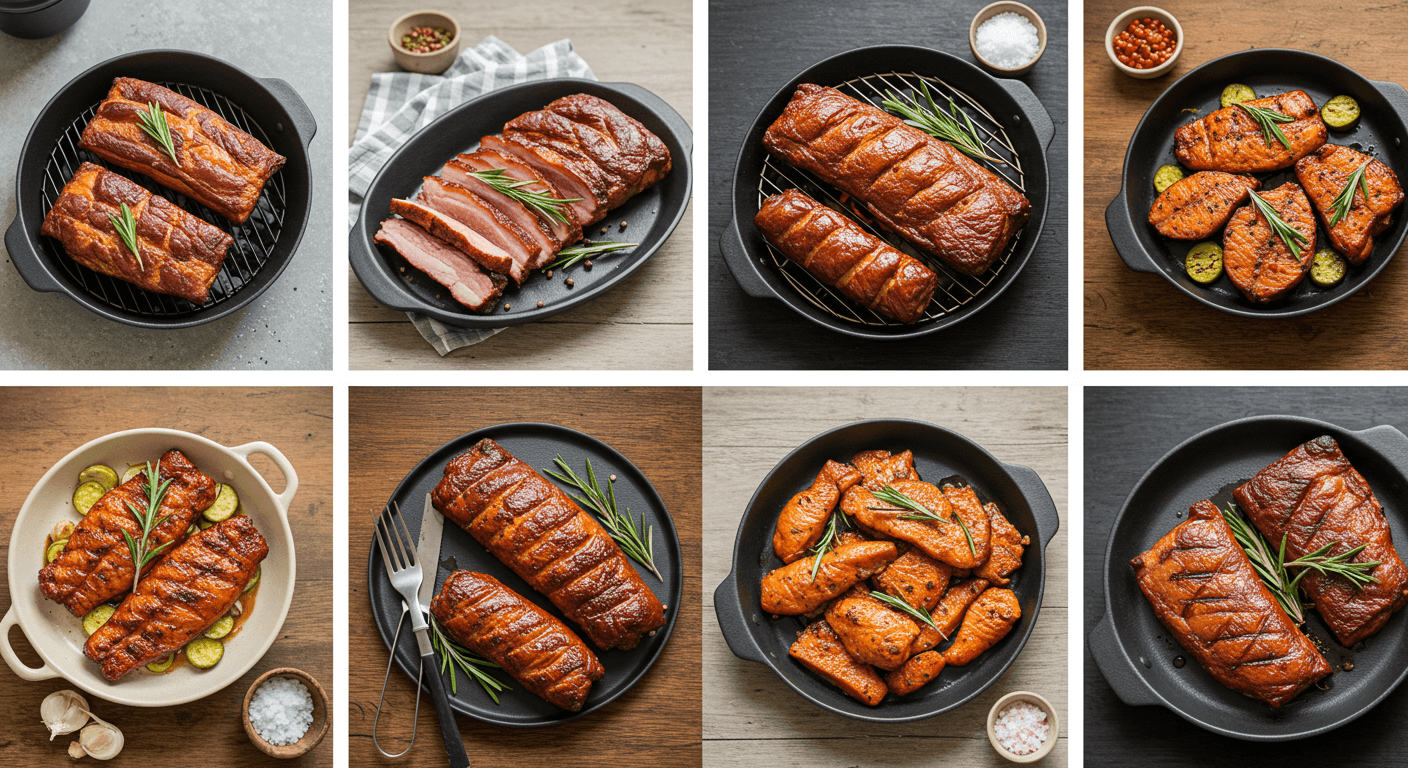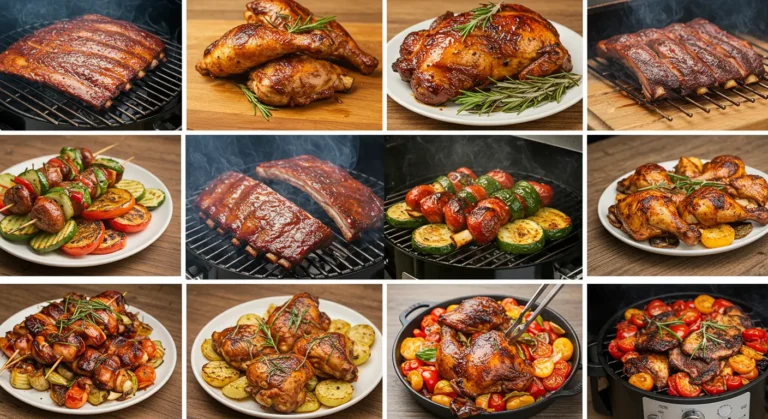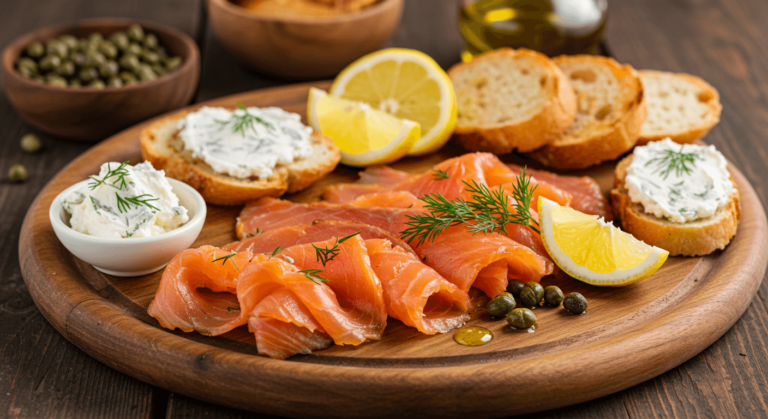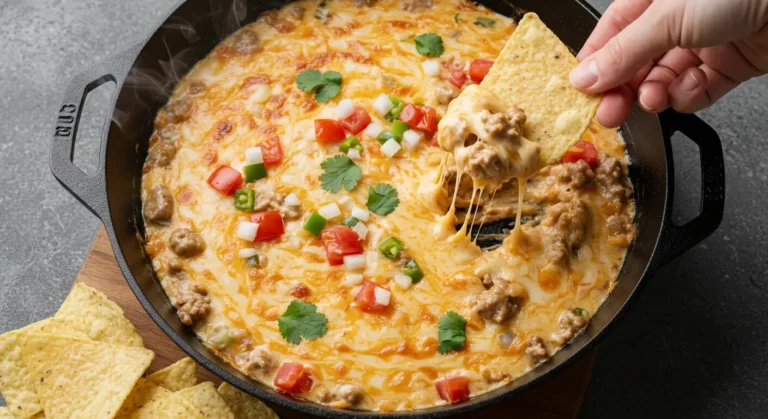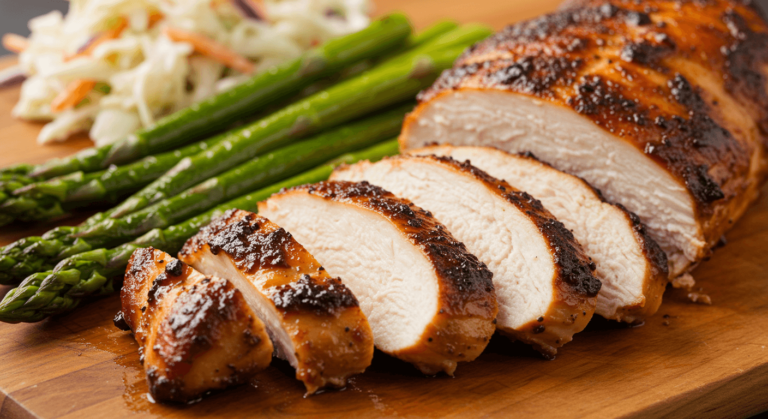Easy and Delicious Smoking Recipes
The moment you lift the lid of your smoker, that distinctive aroma hits you – woody, sweet, and complex – promising flavors that can’t be achieved any other way. There’s something almost magical about transforming raw ingredients into smoky masterpieces through the patient application of time, temperature, and aromatic smoke. Whether you’re firing up your smoker for the first time or looking to expand your repertoire of smoking recipes, this guide will take you through everything you need to know about creating mouthwatering smoked dishes.
Having spent countless weekends tending to smokers of all types and experimenting with techniques passed down through generations of pit masters, I’ve collected the essential knowledge and recipes to help you on your smoking journey. From selecting the right cuts to mastering temperature control, we’ll cover it all. So grab your tongs, prepare your rubs, and let’s dive into the world of smoking food.
What Makes Smoking Food Different From Other Cooking Methods?
“Smoking isn’t just cooking – it’s transformation. With patience, you’re not just preparing food; you’re creating an experience.” – Aaron Franklin, legendary Texas pit master
Unlike grilling or roasting, smoking relies on indirect heat and extended cooking times to break down tough connective tissues in meat while infusing it with complex smoky flavors. This low-and-slow approach creates that distinctive bark (the flavorful crust) and the coveted smoke ring – that pinkish layer just beneath the surface that signals proper smoke penetration.
How Do Wood, Smoke, and Temperature Work Together?
When wood smolders rather than burns, it releases compounds that adhere to food surfaces. These compounds create the complex flavors we associate with properly smoked food. The key is maintaining the right temperature range – typically between 225-275°F – to allow enough time for these flavor compounds to develop while gently cooking the food.
Different woods create distinct flavor profiles:
- Hickory: Bold, bacon-like flavor ideal for beef and poultry
- Apple: Mild and slightly sweet, perfect for chicken and seafood
- Mesquite: Intense and earthy, best for beef and game
- Cherry: Mild with a hint of fruitiness, versatile for most meats
- Maple: Subtly sweet, excellent for poultry and vegetables
- Oak: Medium-strong flavor, a great all-purpose smoking wood

What Are The Different Types of Smokers?
The equipment you use significantly impacts your smoking experience. Each type has distinct advantages:
Offset Smokers feature a firebox attached to the side of the main cooking chamber. Popular among purists, they offer authentic results but require more skill to maintain consistent temperatures.
Electric Smokers provide convenience with precise temperature control. While they’re beginner-friendly, some enthusiasts feel they sacrifice authentic flavor.
Pellet Smokers offer the best of both worlds – consistent temperatures with authentic wood flavor from compressed hardwood pellets. “Pellet smokers democratized smoking,” notes Chris Lilly of Big Bob Gibson Bar-B-Q. “They give newcomers the confidence to tackle challenging cuts.”
Kettle Smokers are versatile grills that can be configured for smoking. They’re affordable entry points but require frequent tending.
Ceramic Kamado Smokers excel at insulation, maintaining steady temperatures while using minimal fuel. These versatile cookers can smoke, grill, and even bake.
Propane Smokers offer convenience similar to electric models but with temperatures that can reach higher for more versatility.
Drum Smokers (or Ugly Drum Smokers) are often homemade from 55-gallon drums. They’re simple but effective, with excellent heat retention.
What Are The Essential Smoker Recipes Everyone Should Master?
How Do You Smoke The Perfect Beef Brisket?
The king of smoked meats, brisket requires patience but rewards with incredible results.
Ingredients:
- 12-14 pound whole brisket (look for good marbling)
- 1/4 cup kosher salt
- 1/4 cup coarse black pepper
- 2 tablespoons garlic powder
- 2 tablespoons onion powder
- Optional: 1 tablespoon of paprika
Preparation:
- Trim the fat cap to 1/4 inch thickness
- Mix spices and apply liberally to all surfaces
- Let sit at room temperature for 1 hour
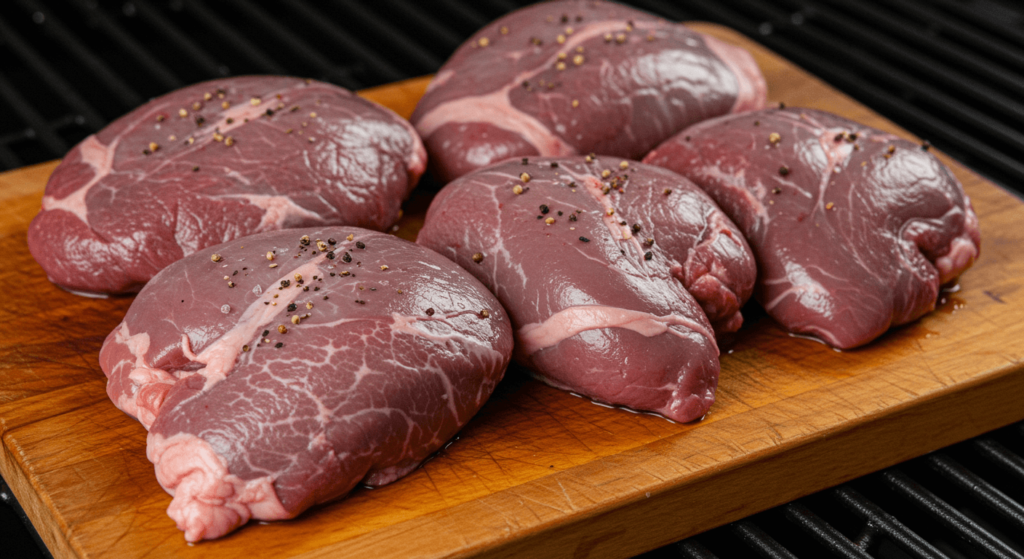
Smoking Instructions:
- Preheat smoker to 250°F using oak or hickory wood
- Place brisket fat side down (controversial, but this protects the meat from direct heat in most smokers)
- Smoke until internal temperature reaches 165°F (about 6-8 hours)
- Wrap tightly in butcher paper (or foil for a softer bark)
- Continue smoking until internal temperature reaches 203-205°F (about 4-6 more hours)
- Let rest, wrapped and insulated, for at least 1 hour before slicing
Pro Tip: Don’t rush the process when the temperature stalls around 160°F. This plateau is simply moisture evaporating from the surface, a crucial step for developing bark. Patience here is rewarded with better texture.
What’s The Secret To Juicy Smoked Chicken?
Unlike beef or lamb, chicken benefits from higher smoking temperatures to keep the skin from becoming rubbery.
Ingredients:
- 1 whole chicken (4-5 pounds)
- 2 tablespoons olive oil
- 3 tablespoons poultry rub (store-bought or homemade)
- 1 lemon, quartered
- 3 garlic cloves, crushed
- Few sprigs of thyme and rosemary
Preparation:
- Spatchcock the chicken by removing the backbone
- Rub with olive oil, then apply seasoning under and over the skin
- Place lemon and herbs in the cavity
Smoking Instructions:
- Preheat smoker to 300°F using fruit woods like apple or cherry
- Place chicken skin side up
- Smoke until breast reaches 160°F and thighs reach 175°F (about 1.5-2 hours)
- Rest uncovered for 10 minutes before carving
Pro Tip: For crispy skin, increase temperature to 375°F for the final 15 minutes of cooking.
How Should You Prepare Smoked Lamb Shanks?
Lamb shanks become incredibly tender when smoked, with the smoke complementing the meat’s natural richness.
Ingredients:
- 4 lamb shanks
- 2 tablespoons olive oil
- 4 cloves garlic, minced
- 2 tablespoons rosemary, chopped
- 2 tablespoons thyme, chopped
- 1 tablespoon kosher salt
- 2 teaspoons black pepper
- 1 teaspoon paprika
Preparation:
- Mix all seasonings with olive oil to create a paste
- Rub mixture thoroughly over lamb shanks
- Marinate overnight for best results
Smoking Instructions:
- Preheat smoker to 250°F using oak or cherry wood
- Place shanks on smoking rack
- Smoke for about 3-4 hours until internal temperature reaches 195°F
- Wrap in foil with a splash of beef broth for the final hour
- Rest for 15 minutes before serving
Pro Tip: Serve over creamy polenta to catch all those delicious juices.
What Are The Best Meats For Smoking?
What Beef Cuts Work Best In A Smoker?
Beyond brisket, several beef cuts shine when smoked:
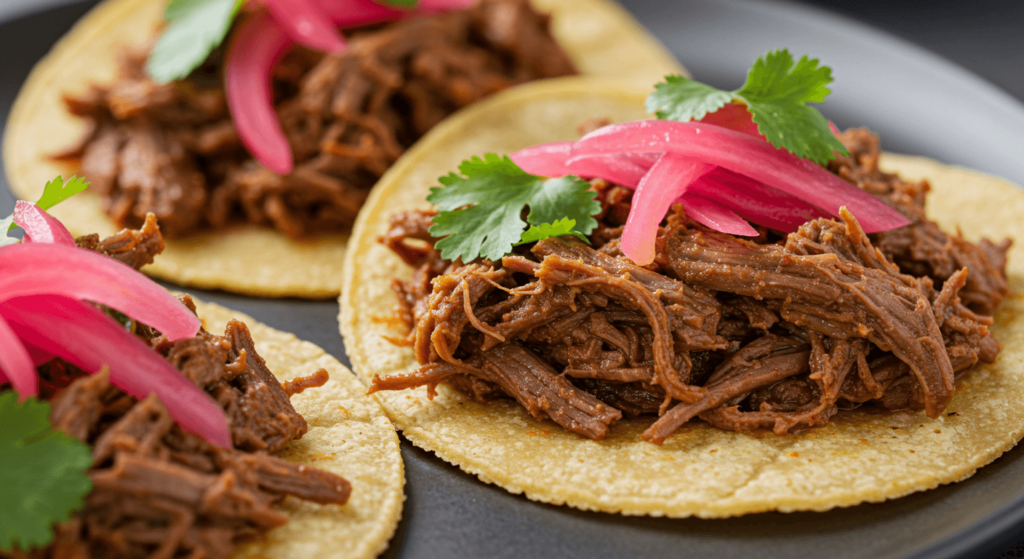
Beef Ribs deliver incredible richness and a dramatic presentation. Choose plate ribs (ribs 3-5) for the meatiest experience. Smoke at 250°F until they reach an internal temperature of 203°F (about 8 hours).
Chuck Roast offers brisket-like results with less cooking time. Smoke at 250°F until it reaches 195-205°F (about 5-6 hours). Perfect for “poor man’s burnt ends.”
Beef Cheeks are a butcher’s secret – incredibly rich and gelatinous when smoked. Treat them like brisket but expect faster cooking times.
Which Game Meats Benefit From Smoking?
Game meats, typically leaner than their farm-raised counterparts, transform wonderfully in a smoker:
Venison Shoulder becomes tender when smoked low and slow, with the smoke masking any gaminess. Use cherry wood and keep temperatures around 225°F.
Duck pairs beautifully with fruit woods. Smoke whole ducks at 275°F until breast temperature reaches 165°F (about 2-3 hours).
Turkey takes on incredible flavor when smoked at 275-300°F until breast reaches 160°F (about 3-4 hours for a 12-pound bird).
Pheasant benefits from brining before smoking to maintain moisture. Smoke at 250°F until breast reaches 155°F.
What About Lamb And Other Alternatives?
Lamb Shoulder rivals pulled beef with its tender, flavorful results. Smoke at 250°F until it reaches 195°F (about 5-6 hours).
Goat works wonderfully with strong woods like hickory. Smoke at 225°F until fork-tender (approximately 7-8 hours for a leg).
How Can You Smoke Vegetables And Seafood?
Smoking isn’t just for meat – vegetables and seafood develop incredible complexity when exposed to smoke.
What Vegetables Work Best In A Smoker?
Whole Cabbage transforms into a tender, smoky delight. Core partially, fill with butter and seasonings, and smoke at 250°F for 2-3 hours.
Bell Peppers take on a sweet smokiness that enhances salsas and sauces. Smoke halved peppers at 250°F for 1-2 hours.
Corn on the Cob develops complex flavor with light smoke. Leave husks on but pull them back to remove silk, then replace husks and soak in water before smoking at 275°F for 45-60 minutes.
Mushrooms – particularly portobello and king oyster varieties – become meaty and intensely flavorful. Smoke at 225°F for 45-60 minutes.
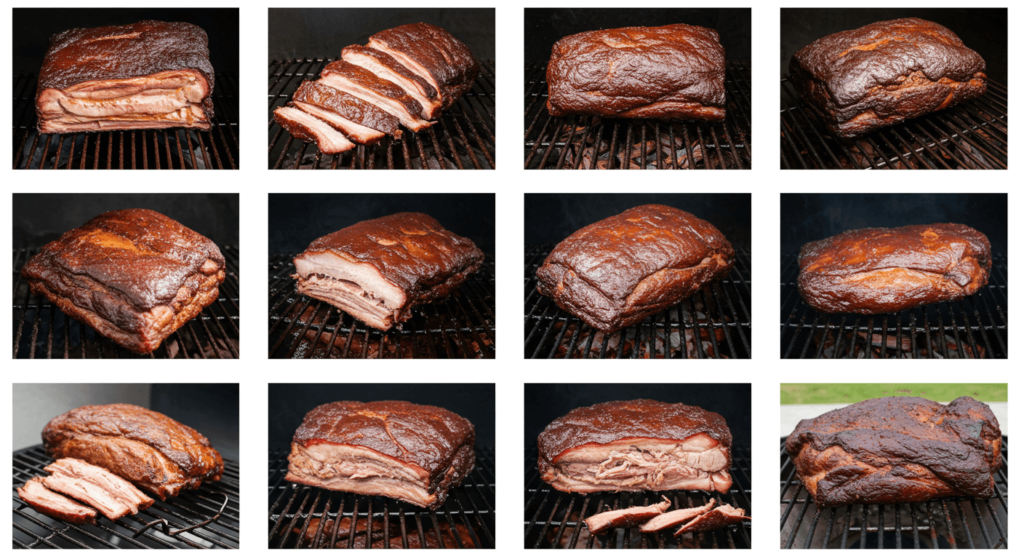
What’s The Best Approach For Smoking Seafood?
Seafood benefits from both hot and cold smoking techniques:
Hot-Smoked Salmon cooks while smoking at temperatures around 225°F until it reaches 145°F internally (about 1-2 hours depending on thickness).
Cold-Smoked Salmon is first cured, then smoked at temperatures below 85°F for 12-24 hours, creating that silky, translucent texture.
Trout is perfect for beginners – simply stuff with lemon slices and herbs, then smoke at 225°F for about 1 hour until it flakes easily.
Temperature/Time Chart for Seafood:
- Salmon fillets (1-inch thick): 225°F for 1 hour
- Whole Trout (12-14 inches): 225°F for 1-1.5 hours
- Shrimp (large): 225°F for 20-30 minutes
- Scallops (large): 225°F for 45-60 minutes
- Oysters: 225°F for 30-40 minutes
What Are The Best Beginner-Friendly Smoking Recipes?
Starting your smoking journey? These recipes build confidence while delivering impressive results:
How Do You Make Foolproof Smoked Chicken Wings?
Chicken wings are forgiving and cook relatively quickly.
Ingredients:
- 3 pounds chicken wings
- 2 tablespoons baking powder (helps crisp the skin)
- 1 tablespoon kosher salt
- 2 teaspoons garlic powder
- 2 teaspoons paprika
- 1 teaspoon black pepper
Preparation:
- Pat wings dry thoroughly
- Mix dry ingredients and toss wings until evenly coated
- Refrigerate uncovered for 3 hours (or overnight for best results)
Smoking Instructions:
- Preheat smoker to 275°F using apple or cherry wood
- Arrange wings in a single layer
- Smoke for 45 minutes
- Increase temperature to 375°F and continue cooking for 30-45 minutes until skin is crispy and internal temperature reaches 175°F
- Toss in your favorite sauce if desired
Pro Tip: For extra crispy wings, finish them on a hot grill for 1-2 minutes per side.
What Makes Smoked Meatloaf So Special?
Smoking transforms ordinary meatloaf into something extraordinary.
Ingredients:
- 2 pounds ground beef (80/20 blend)
- 1 pound ground lamb
- 1 cup breadcrumbs
- 1 onion, finely diced
- 2 eggs
- 3 tablespoons Worcestershire sauce
- 2 tablespoons ketchup
- 2 teaspoons garlic powder
- 2 teaspoons salt
- 1 teaspoon black pepper
- Optional glaze: 1/2 cup ketchup, 2 tablespoons brown sugar, 1 tablespoon vinegar
Preparation:
- Mix all ingredients except glaze until just combined
- Form into a loaf shape on a piece of parchment paper
- Mix glaze ingredients if using
Smoking Instructions:
- Preheat smoker to 250°F using hickory or maple wood
- Transfer meatloaf (on parchment) to smoker
- Smoke for 2 hours
- Apply glaze if using
- Continue smoking until internal temperature reaches 160°F (about 1 more hour)
- Rest for 15 minutes before slicing
Pro Tip: For a flavor boost, lay a few strips of bacon across the top before smoking.
What Advanced Smoking Techniques Can You Master?
Ready to impress? These advanced recipes create show-stopping results:
How Do You Create Competition-Style Beef Ribs?
Ingredients:
- 1 rack beef plate ribs (3-bone section)
- 4 tablespoons Dijon mustard
- 1/4 cup kosher salt
- 1/4 cup coarse black pepper
- 2 tablespoons garlic powder
- 2 tablespoons brown sugar
- For spritz: 1 cup beef broth, 1/4 cup apple cider vinegar
Preparation:
- Trim excess fat but leave fat cap intact
- Apply mustard as a binder
- Apply rub generously to all surfaces
- Let sit at room temperature for 30 minutes
Smoking Instructions:
- Preheat smoker to 275°F using oak wood
- Place ribs bone-side down
- After 3 hours, begin spritzing every 45 minutes
- When bark is set and color is mahogany (around hour 5-6), wrap tightly in butcher paper
- Continue smoking until internal temperature between bones reaches 203-205°F (about 2-3 more hours)
- Rest, wrapped and insulated, for 1 hour
- Slice between bones to serve
Pro Tip: For presentation, stand the rack up and slice downward between bones for a dramatic “tomahawk” effect.
What’s The Secret To Amazing Smoked Beef Cheeks?
This butcher’s cut is a well-kept secret among smoking enthusiasts.
Ingredients:
- 4 beef cheeks (about 3 pounds total)
- 2 tablespoons olive oil
- 2 tablespoons kosher salt
- 2 tablespoons coarse black pepper
- 1 tablespoon paprika
- 1 tablespoon garlic powder
- For braising: 1 cup beef broth, 1/4 cup red wine
Preparation:
- Trim silver skin and excess fat
- Rub with olive oil
- Apply seasonings generously
Smoking Instructions:
- Preheat smoker to 250°F using oak or hickory
- Smoke uncovered for 3 hours
- Transfer to foil pan with braising liquid
- Cover tightly with foil and return to smoker
- Continue cooking until fork-tender (about 3 more hours)
- Rest for 30 minutes before serving
Pro Tip: Shred and serve on fresh tortillas with pickled red onions and cilantro for incredible tacos.
What Are The Most Common Smoking Questions?
How Do You Know When Smoked Meat Is Done?
Always go by temperature, not time. Invest in a good digital thermometer and follow these guidelines:
- Brisket: 195-205°F (should probe like butter)
- Beef/Lamb Ribs: 200-205°F
- Chicken: 165°F for breast, 175°F for thighs
- Turkey: 160°F for breast, 170°F for thighs
- Fish: 145°F
- Vegetables: Tenderness is your guide
What Causes The Dreaded “Stall” And How Do You Handle It?
The stall occurs when evaporating moisture cools the meat’s surface, counteracting the smoker’s heat. Most pronounced in brisket and pork shoulder, it typically happens around 160-170°F and can last several hours.
Solutions include:
- Patience: Simply wait it out (purist approach)
- The Texas Crutch: Wrap in foil to power through (fastest)
- Butcher Paper Method: Wrap in pink butcher paper (middle ground)
How Do You Troubleshoot Temperature Issues?
- Running too hot: Reduce airflow, add water pan, try the minion method for charcoal
- Running too cold: Check for leaks, increase airflow, ensure proper fuel
- Temperature swings: Add thermal mass (water pan), reduce how often you open the lid, consider an automatic temperature controller
- meat smoking recipes
- trout smoking recipe
The Journey Continues
Smoking food isn’t just about the end result – it’s about the process, the patience, and the pride that comes from creating something truly special. As pit master Tuffy Stone says, “In barbecue, there are no shortcuts. The journey is the destination.”
Start with these recipes, but don’t be afraid to experiment and develop your own signature style. Join online smoking communities, attend barbecue competitions, and share your successes (and failures) with fellow enthusiasts.
Remember that each smoking session teaches something new, whether about technique, flavor combinations, or simply the value of patience. So tend those coals, monitor those temperatures, and enjoy the rewarding process of transforming humble ingredients into smoky masterpieces that gather friends and family around your table.
What smoking recipe will you try first?
Have You Tried This Recipes!
After trying countless smoking recipes,
I have to say the beef cheek taco suggestion is absolutely brilliant and criminally underrated. Most home smoking enthusiasts focus solely on brisket and ribs, completely overlooking beef cheeks – which might be the best thing you’ll ever put in your smoker.

